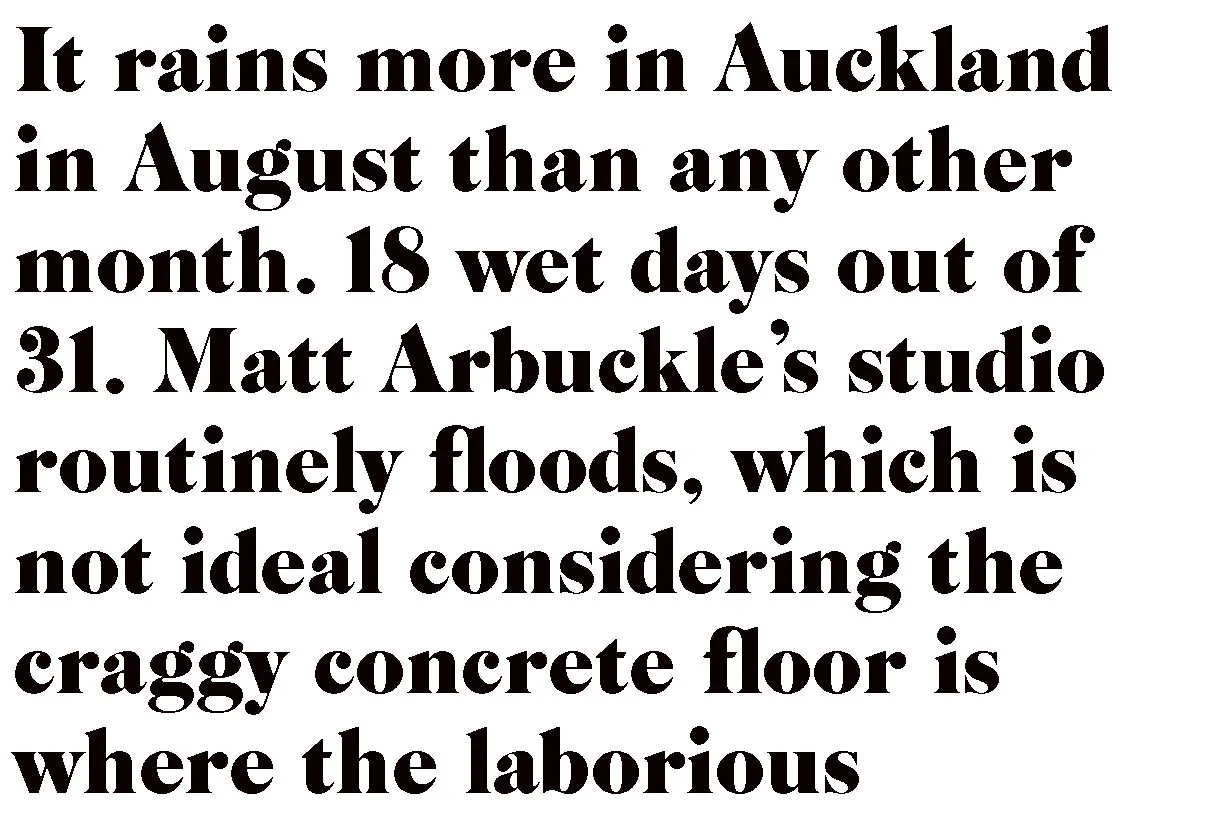Matt Arbuckle: Reflection is Reflection
by Victoria McAdam
It rains more in Auckland in August than any other month. 18 wet days out of 31. Matt Arbuckle’s studio routinely floods, which is not ideal considering the craggy concrete floor is where the laborious process behind his paintings often begins. But Arbuckle has built a barricade to ward off the rainwater, and the inconvenience is offset by an intrigue with the particular manner each season brings to his landscape. These manners infiltrate his practice, which is, fundamentally, a process-driven exploration of place.
Place is a shifting metric for Arbuckle. In recent years, it has transitioned in pairs. Two cities— Auckland and Melbourne—hold two lived experiences; two homes, two studios, two outcomes in two spaces: a suite of rich paintings and an unfurling sculptural intervention.
1.
Moments of undulating pigmentation in Arbuckle’s paintings are evidence of the surfaces and materials they dried against.
Debris is repurposed into compositional substructure: yellow pierces a dark veil where a plank of wood disrupted the studio floor; uniform patterning echoes liquid pooling across the ribbed plane of a saturated cardboard panel.
For the last several years, Arbuckle has sustained procedures of folding to manipulate the passage of paint through his knitted polyester canvas (a bifold support: lustrous and diaphanous like silk, but robust). Portions of knit are folded vertically, drenched in foundation hues, released, then doubled horizontally, bathed in colour, and again. Fold, soak, release, repeat. Accumulatively, colour permeates the textile, arresting these folds in undulating streaks that walk beyond the boundaries of their frames. These processes constitute a set of constraints and boundaries that realise an elaborate visual language.
2.
16 metres of textile swathe white walls. A vernacular unfurls into space.
Arbuckle’s sculptural paintings revel in the transparency and pliancy of his support, and enfold narrative histories of their production.
A work of this kind formed the nucleus of Recto-Verso, a solo presentation by Arbuckle commissioned by the Hastings City Art Gallery and exhibited between 24 October 2020 — 24 January 2021. Its 50 metre breadth emulated the 50 metre span of the gallery’s walls.
This new iteration transposes another locale into the gallery: the 16 metre driveway of Arbuckle’s Glenlyon, Victoria, home. Represented through evocative patterning, this site becomes fluid, punctuated by wooden fragments from Arbuckle’s studio.
Like the ghosted forms of the surfaces and materials that accompanied this work’s production, these artefacts of process are endemic to one site, a second home. A home transcribed in secondary colours: green, orange, purple.
Two sites, two manners, intersecting like the axis created by one final horizontal fold. Experienced together, informing one another.
— Victoria McAdam

